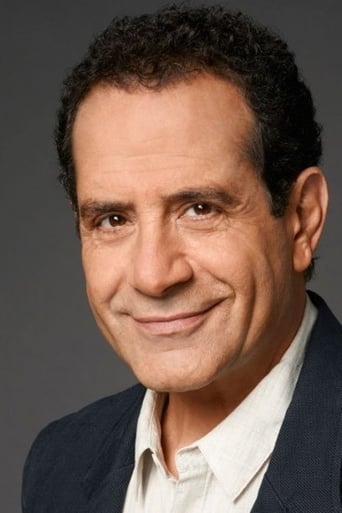TrueJoshNight
Truly Dreadful Film
Actuakers
One of my all time favorites.
Orla Zuniga
It is interesting even when nothing much happens, which is for most of its 3-hour running time. Read full review
Calum Hutton
It's a good bad... and worth a popcorn matinée. While it's easy to lament what could have been...
gavin6942
The story of two Italian immigrant radicals who were executed in 1927 offers insights into present-day issues of civil liberties and the rights of immigrants.Oddly, the film is not really about the case, at least not much of the time, like you might expect. They could easily have used the 90 minutes to go through the evidence for and against the accused. Instead, they show the influence the men had on history, art, and one man even shows where one of the men lived. Maybe you should not watch this documentary unless you have already read something of the case and know the background.Howard Zinn shows up here, both as an interview subject and as a professor giving a speech. Zinn is a perfect person to interview, as few other people have championed the underdog quite like he has. (Sadly, he is no longer with us.) He may be a bit too sympathetic with the anarchists, but then again, maybe they were innocent.
dgz78
Popping this into the DVD player I hoped for a detailed history of the S&V case. Instead it bordered on hagiography with the two defendants just a couple of innocent anarchists caught up in a wave of immigration hatred. And at the end the point is made that such irrational hatred continues to this day because we are indiscriminately rounding up Muslims and shipping them off to Gitmo.I say this as someone whose grandfather was an immigrant from Italy. The movie downplays any evidence against the defendants using the standards of today's justice system. Because the police didn't have DNA evidence, fingerprints, surveillance video or ballistic evidence it is assumed the case was weak.Were Sacco and Vanzetti guilty? I don't know but then I wasn't around at the time. But if you are looking for a balanced account of the case you can save your time and pass this DVD by.
Roland E. Zwick
Long before Amy Fisher and Joey Buttafucco became household names and courtroom celebrities, long before Robert Blake and O.J. Simpson took to the stand in their own defense, there were Ferdinando Nicola Sacco and Bartolomeo Vanzetti, two Italian immigrants whose highly-publicized murder trial electrified the nation and became one of the hot media sensations of the 1920's.Shortly after coming to America, both Sacco and Vanzetti became involved with a group of socialist anarchists dedicated to eradicating (sometimes through the use of violence) the stark inequities of status and class they perceived in the society around them (an idea that did not go down well in a capitalist nation watching in horror the success of the then quite recent Bolshevik Revolution). On April 15, 1920, the pair was arrested for the murder of two men, a paymaster and a security guard, who were shot in cold-blood while transporting the payroll from a shoe factory in Braintree, Massachusetts. Even though there was no real evidence tying them to the killings, Sacco and Vanzetti were eventually placed on trial, convicted on charges of 1st degree murder, and put to death in the electric chair on August 23, 1927. In the years since, the case of Sacco and Vanzetti has gone down in history as one of the major miscarriages of justice in all of American jurist prudence, while their very names have become synonymous with a legal system that too often abandons its quality of disinterested objectivity in favor of bigotry, corruption and fear.As directed by Peter Miller, the documentary "Sacco and Vanzetti" attempts to come to terms with the fate of the two men and to view the case in its broader social context. Through the use of archival photos and footage, interviews with experts and historians (and even a niece of Sacco himself), clips from the 1971 movie dramatization of the story, "Sacco and Vanzetti," and voice-over recitations of excerpts from the two key figures' very own journals and letters, Miller explores how the legal system was able to veer so far off the rails in a country that prides itself on the blindness of its justice and the fair treatment it ostensibly affords to all its people. He finds his answer mainly in the love/hate relationship that America has always had with its immigrant populations. For he makes it clear that this was little more than a sham show trial, one consisting mainly of circumstantial evidence and fraudulent testimony, presided over by a judge with small tolerance for immigrants or anyone not of the Anglo-Saxon persuasion. The men were found guilty more of the sin of being "unpatriotic" than of the commission of any actual crime. It is this aspect, more than any other, that touched such a raw nerve in so many people not only in the United States but around the world. Towards the end, we are shown how the case eventually moved beyond its own limited context, entering the realm of American mythology and inspiring socially conscious artists, poets, novelists and songwriters to produce some of their most poignant and notable work.Although the movie is a bit murky on some of the facts of the case and doesn't offer us a clear enough picture of the men as individuals (the pre-crime period in their lives is particularly sketchy), "Sacco and Vanzetti" provides us with an interesting history lesson as well as an intriguing glimpse into the time in which the events took place. In addition, with its tale of racial discrimination and societal prejudice, the movie has a great deal of relevance for the world today as we see immigration once again coming to the forefront as a hot-button political issue, a parallel the filmmakers are quick to point out at the conclusion of the film. That alone makes this a movie well worth checking out.
florafairy
Having studied art history, Ben Shahn's iconic portrait of Nicola Sacco and Bartolomeo Vanzetti was what first sparked my interest in Peter Miller's documentary on the notorious case that perverted American justice to enact xenophobic retribution on two anarchist Italian immigrants in a jingoistic, postwar culture of fear (sound familiar? Director Miller certainly seems to think so.) The short, "American Experience"-style presentation (talking heads, dramatic underscore, car trips to sites whose history has long been paved over) does not deflect from the riveting nature of the story as it happened, nor does it protect the audience from squirming at the implications of the awkward reality of American justice in general and the death penalty in particular. (As one of the commentators in the film states, the American legal system may be better designed than any other in the world, but as it is practiced, it is hardly immune to human error.) And, as demonstrated by hundreds of thousands of protesters around the world during the 1920s, the Sacco and Vanzetti case (if it can even be called that, so flimsy was the evidence and how biased the judge and jury) was among the great injustices inflicted by an American courts. By framing the story as he does, first by depicting Sacco and Vanzetti as hard-working idealists (gun-toting anarchists to be sure, but NICE gun-toting anarchists) and sketching out the wary American mood at the time (it wasn't all Jazz Age bootleg hooch and the Charleston, apparently), Miller keeps the audience interested in the outcome of the the ensuing "trial" (the details of which, with the mysteriously-scratched bullet and perjuring witnesses, are the most riveting part of the film, but unfortunately only a tangent from the main message). Disappointingly little attention is paid to the global outcry (tantalizing film clips of protests around the world are shown), and the conventional "where are they now?" epilogue is not included as a part of the movie. And we never do find out more about those Ben Shahn portraits. The inclusion of excerpts from Sacco and Vanzetti's eloquent correspondence, as read in thick accents by Tony Shalhoub and John Turturro, is a nice touch. Overall, the documentary is insightful--and inciteful, and should be mandatory viewing for all high-school U.S. history classes, or for anyone who has an interest in where America has been and where we are going. I'm not convinced, however, that its format makes for riveting cinema-- it would be a much better fit for television.

